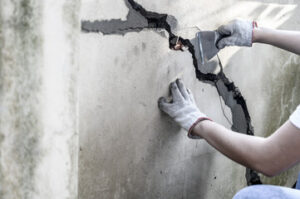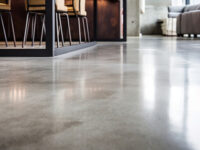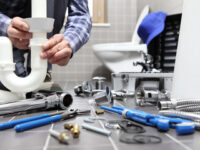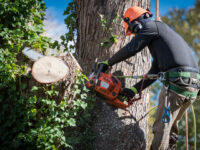How to Repair Cracks and Ridges in Concrete
Getting new concrete poured takes time and money. Repairing existing concrete can be done much quicker and cheaper.
Properly preparing the damaged area is critical for a successful repair. Skipping this step can lead to poor adhesion and recurring damage. A good preparation process includes cleaning, pressure washing and using the right products. Contact Concrete Repair Bismarck for professional help.
Cracks in concrete are common and, depending on their severity and cause, can be an indication of structural damage that requires professional attention. For smaller surface cracks, a simple cement-based patching compound can be used to fill and seal the gap. It’s essential that the crack is thoroughly cleaned to ensure the repair material bonds correctly. Loose dirt or debris in a crack can prevent it from filling completely and may even create further damage in the future.
If the crack is wider than 1/8 inch, it’s recommended to seek professional assistance. A concrete specialist can assess the structure and determine the underlying causes of the damage. The contractor can then implement a suitable repair strategy. For larger cracks that require substantial reinforcement, epoxy injection is a reliable and durable solution.
Drying shrinkage cracks:
As concrete dries and cures, it naturally shrinks. This can lead to shallow surface cracks, usually in a ‘V’ pattern. They’re usually not a serious concern but keeping concrete moist can help minimize them.
Plastic shrinkage cracks:
Plastic shrinkage cracks develop while the concrete is still in its plastic (unhardened) state and are a common issue with newly poured slabs or exposed surfaces. These shallow cracks resemble a spiderweb pattern and are caused by rapid moisture loss from the surface.
Map cracking:
Map cracking is a destructive type of cracking that forms as a result of an alkaline cement reaction with reactive silica in aggregates. It creates a hygroscopic gel that absorbs water, expands, and exerts internal pressure leading to progressive weakening of the concrete structure. It can be treated with polyurethane resin, foam injection, or epoxy injection depending on the severity and circumstances to seal the cracks and prevent moisture ingress. The repair process can also be enhanced by applying a protective coating like a water-based acrylic or epoxy coating to enhance durability.
Looseness
Concrete is an incredibly durable and cost-effective building material, but even the most robust materials suffer wear and tear over time. When this occurs, it’s critical that the damage be addressed quickly to prevent further deterioration and potential structural failure. To this end, there are several methods to repair concrete surfaces, each with its own benefits and limitations. Choosing the right method depends on the extent of the damage and its cause.
Commercial concrete repair is a complex process that requires high-quality workmanship and products working in tandem. Like a skilled dentist, it’s important to understand the root causes of concrete damage before attempting a repair. This will allow construction professionals to make better decisions about what tools, admixtures, and coatings they use on the job to optimize the quality of their work.
Loose concrete can be caused by numerous factors, including exposure to freeze-thaw cycles or chemical damage. This type of damage can result in spalling, which is the breaking away of surface layers from the underlying concrete. When this happens, the underlying concrete is exposed to moisture penetration, which can lead to further damage and eventual structural failure.
Attempting to repair loose concrete without understanding its underlying cause can lead to repeated failed repairs. If the underlying concrete is heavily damaged, it may be more effective to remove and replace it altogether rather than using a patching material.
The use of a patching material can also be detrimental if the surface preparation is inadequate. The surface must be free of oil, grease, and other contaminants to ensure good adhesion. The use of an appropriate bonding agent can help strengthen the bond between the patch and the existing concrete and reduce the risk of future cracking and spalling.
Another key consideration when using a patching material is the consistency of the concrete mix. The concrete mix should be dry enough to pack together into a firm “snowball” with little sagging, but it should retain a sheen of water on the surface. This sheen will protect the concrete from further damage and promote proper curing.
Sunken Areas
Concrete may seem like a hard, indestructible material that will last for ages, but it actually needs care to remain stable and safe. Over time, it can wear down, crack and sink due to a variety of reasons. When left unattended, these problems can worsen, leading to costly repairs and reduced property value.
Sinking concrete is a common problem that affects sidewalks, driveways, patios and more. If left unrepaired, these uneven surfaces can become tripping hazards for you and your guests. They also open your home to drainage issues and potential foundation damage.
The cause of sunken concrete is usually due to poor soil conditions. This can be caused by a number of factors, including erosion and settlement. The best way to prevent this type of issue is to address the underlying soil problem. Using the PolyLevel concrete lifting technique can help you lift and level these sunken areas, reducing the risk of future damage.
While patching or replacing concrete is the traditional solution for these issues, this method only addresses the surface of the damaged slab. It doesn’t address the reason for the settling, which could mean that it will just wear down again in the future. Instead, a PolyLevel contractor can use a revolutionary foam to fill voids and lift the concrete slabs back to their original position.
There are many benefits to repairing sunken concrete, from improved safety to enhanced curb appeal. Uneven and tilted concrete is a tripping hazard, especially for young children and seniors. It can also be difficult to keep clean, as dirt and debris easily gets trapped in the cracks. Using a PolyLevel concrete lifting service can lift and level these sections of the concrete, removing the trip hazard and making it easier to keep clean.
Rough Edges
Some concrete products have a tendency to develop rough areas or ridges on their surfaces. This can occur when the product is wet or dry, but it is especially noticeable when wet and detracts from the appearance of the concrete. The good news is that these ridges can be repaired using the same method you would use for repairing cracks or holes.
To begin with, the concrete surface must be thoroughly cleaned to remove any dirt or debris that could interfere with the adhesion of the repair material. This process can be done by power washing, vacuuming or brushing to ensure the surface is clean and ready for the new material. In addition, it is a good idea to use a bonding agent on the surface to help improve adhesion. This will also prevent future separation of the repair material and the existing concrete.
Once the concrete has been thoroughly cleaned, it should be dampened to reduce vapor loss from the fresh concrete. Placing a damp burlap sheet or covering it with a large piece of plastic should work well to keep the area moist and prevent any additional moisture loss.
Next, the ridges can be filled with your standard repair material. This can be the same concrete mix used for the rest of the slab or a patching material. Once the patch is in place, a walk-behind sander with a black coarse rough pad can be used to smooth the surface and bring out the color.
Finally, a concrete sealer can be applied to the repaired surface to protect it from further damage and to promote an attractive finish. Be sure to follow the manufacturer’s guidelines for application and curing.
Determining the severity of each repair, classifying it as major or minor, and identifying its cause are critical steps in any concrete repair project. Once the defects have been properly identified, the best method to correct them will depend on your unique situation and the requirements of the concrete structure in question. By following the proper procedures, you can ensure that your concrete repairs are successful and last for many years to come.






